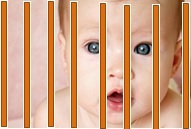 Invisible Fences—Holding Me In or Holding You Out
Invisible Fences—Holding Me In or Holding You Out
For the month of March we will explore the role of boundaries in family life.
For many of us, our first experience with boundaries is the crib in which we slept as babies. It served to keep us safe, to define the limits of exploration and provided us a place that was secure, and our own.
This comfort zone is important for all children and is a need we never outgrow even as adults. While the bars of a crib are obvious both to the baby and the world that looks in, the boundaries we establish as adults often are more subtle.
We exchange the bars of the crib for the limits of a self-defined invisible fence. It falls to us to actively hold those boundaries so that people recognize and accept them. We can assert them with a confidence that invites respect or with an emotionality that invites confrontation.
Our boundaries are the expression of the values which we hold most dear, for example, respect, honesty, health, love, achievement, or intimacy. By living our values we teach others how to treat us and we reveal how much we value ourselves. When we hold our boundaries confidently, we model this skill for our children and teach them an important life lesson. How intentionally have you defined your boundaries? Which ones serve you well and which ones have you outgrown?
Next week we will explore what happens when children did not experience healthy boundaries and their invisible fence was pierced. What strategies did they learn to keep themselves safe and secure? What happened when their fence became a wall?



Thank you for this reminder, as I struggle with seeing boundries as a gift to myself and others.